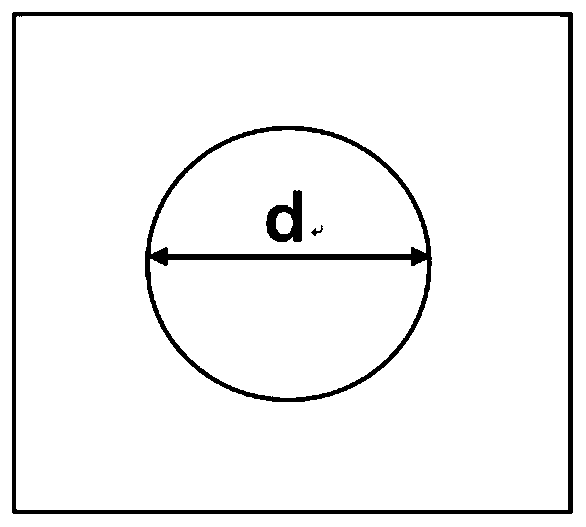Achromatic metalens design method and achromatic metalens thereof
A design method and achromatic technology, applied in the direction of optical components, optics, instruments, etc., can solve the problems of unsatisfactory effects of meta-lenses, unsatisfactory effects, and reduced area, so as to reduce the number of scans and design time, Reasonable design and easy production
- Summary
- Abstract
- Description
- Claims
- Application Information
AI Technical Summary
Problems solved by technology
Method used
Image
Examples
Embodiment 1
[0040] A design method of an achromatic meta-lens, as shown in Figure 1-2, takes an achromatic meta-lens with three layers of the first nano-unit 2, the second nano-unit 4 and the third nano-unit 6 as an example, The degrees of freedom of the first nano-unit 2, the second nano-unit 4 and the third nano-unit 6 are respectively three, and the total degree of freedom of the three-layer superposition is nine, including the following steps:
[0041] S1 determines the total degrees of freedom of the individual nano-units 2, 4, and 6, and sets the required incident light band, and then sets the range and interval of the geometric parameters of each degree of freedom. The geometric parameters of each degree of freedom of , 4 and 6 are simulated and scanned to obtain the phase shift and transmittance of the incident light band produced by a single nano-unit 2, 4, and 6 under different combinations of geometric parameters;
[0042] S2 changes the wavelength band of the incident light, a...
Embodiment 2
[0050] An achromatic metal lens, such as figure 2 , 4 , 5, the achromatic meta-lens design method described in Embodiment 1 is adopted, including a substrate 1 and a multi-layer nano-unit 2, 4, and 6 that are arranged on one side of the substrate 1 and are stacked and combined. Units 2, 4, and 6 are of sub-wavelength size, and the multilayered nano-units 2, 4, and 6 are stacked and combined according to the Fresnel hyperbolic law: Arrange, where x, y are the coordinates of each nano-unit, is the phase shift of the nano-unit, λ is the target wavelength, n is the refractive index of the material background, f is the design focal length, and C(λ) is the initial phase constant.
[0051] like figure 2 , 4 As shown in , 5, taking a three-layer superimposed achromatic metalens as an example, the first nano-unit 2 and the second nano-unit 4 are monocrystalline silicon cylindrical nano-units, and the third nano-unit 6 is a silicon nitride cylindrical nano-unit unit. Wherein, an...
PUM
 Login to View More
Login to View More Abstract
Description
Claims
Application Information
 Login to View More
Login to View More - R&D
- Intellectual Property
- Life Sciences
- Materials
- Tech Scout
- Unparalleled Data Quality
- Higher Quality Content
- 60% Fewer Hallucinations
Browse by: Latest US Patents, China's latest patents, Technical Efficacy Thesaurus, Application Domain, Technology Topic, Popular Technical Reports.
© 2025 PatSnap. All rights reserved.Legal|Privacy policy|Modern Slavery Act Transparency Statement|Sitemap|About US| Contact US: help@patsnap.com



